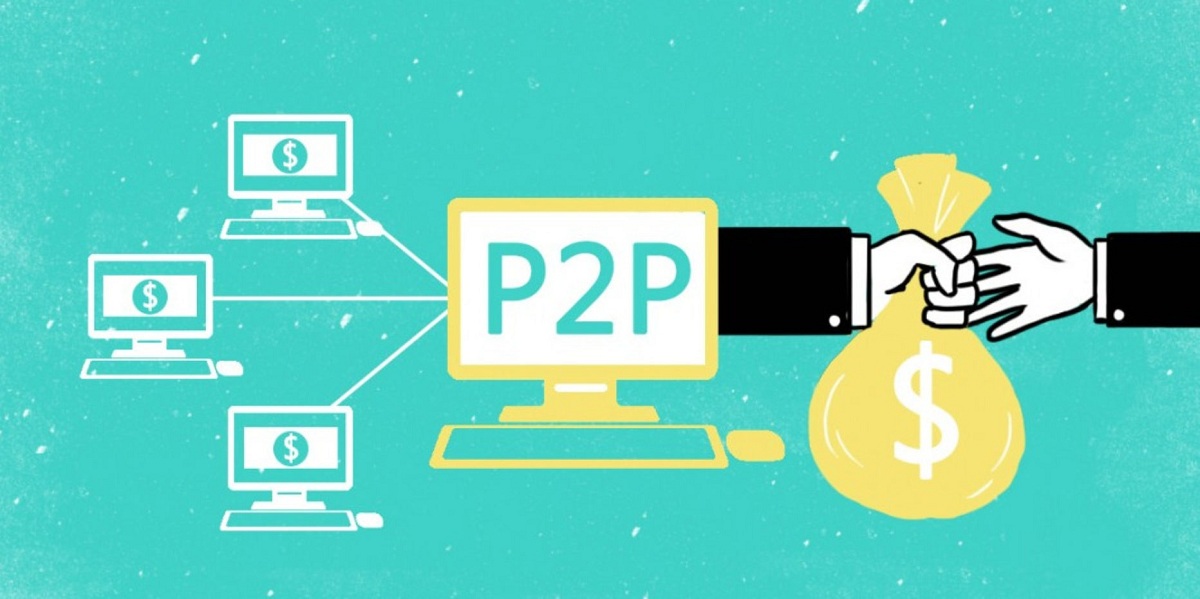Cryptocurrency is not just an asset stored with expectations of increase in prices. Increasingly, crypto holders have always found ways and means of making passive income from the assets through lending it. Crypto lending has now gone trendy among investors since one can earn steady returns on their holdings without selling their holdings. If you seek a way to transform your crypto into a cash cow, crypto lending could just be effective. This article provides a guide on how it works, why it's gaining popularity and some tips to maximize your earnings safely.
What is Crypto Lending?
Crypto lending simply means you lend your cryptocurrency to a borrower who will pay you through interest payments, in most cases, in DeFi platforms or centralized exchanges. The platforms ensure the borrower and the lender meet at each other. The borrower will often provide collateral for security so as to minimize the risk of default.

Why go for Crypto Lending?
Crypto lending is an income source without needing to trade or sell assets. The returns from traditional savings accounts are less than 0.5% annually. For comparison, the crypto lending returns can reach 10% to 15% per annum for some assets, though those rates change extremely depending on the platform and crypto asset. Crypto lending, being an attractive means of maximization of earning potential through high returns within the crypto asset, has been a lucrative option.
Types of Crypto Lending Platforms
There are two well-known kinds of crypto lending platforms: centralized and decentralized. These two are characterized by different benefits and challenges.
- Centralized Lending Platforms: Centralized platforms are the companies that administer the lending process, manage deposits, and pay interest. Such examples are Celsius, Nexo and BlockFi. They are generally easy to use; they offer support, which is very perfect for beginners. But since they are centralized, this trusts the users need to place in the platform to allow the custody of their funds has become a challenge. Along with that, some stablecoins also provide interest up to 9.3% per annum, though the rate differs based on demand and market conditions.
- Decentralized Finance Platforms: The lending platforms of DeFi do not have a central authority and the smart contracts manage the loans and the interest payments. Aave and Compound are popular DeFi platforms. These give a lot of control to the user and remove intermediaries but are more complex with additional risks due to vulnerabilities in smart contracts. Aave earns 2% to 10% interest on stablecoins with some being different depending on the market and the supply and demand.

Investing in Crypto Lending
Crypto lending is straightforward, but there is nothing without attention to detail and taking necessary risks. Here's a simple investment guide:
- Select the Platform: First, decide if you need a centralized or decentralized platform. While centralized platforms are a good place to start for those new to the game, DeFi platforms are much more versatile and reward experienced users with better pay.
- Deposit Cryptocurrency: Choose a platform and deposit your cryptocurrency. Most platforms accept major assets like Bitcoin, Ethereum, and stablecoins such as USDT or USDC. Stablecoins are very popular when lending, because their value remains the same with creating of little risk.
- Value Terms: Most of the lending websites offer term loans with fixed agreement. Here, your money is locked in a particular amount of time. There are some lending websites, though whose terms are relatively fluid. Fixed term form term loans usually have higher interest than the fluid form where you can withdraw your money at any given time.
- Track Your Interest: Once you have transferred and chosen your terms you will then start earning interest from your crypto. Keep track of this and also observe any changes in the interest rates, or any changes in platforms policies as these may lead to low returns.
Key Consideration to Safe Crypto Lending
Crypto lending is promising, but it poses risks as well. It is crucial to understand those risks and manage them for security of your investment.
- The Security of the Platform: Conduct some research about security on the platform before depositing funds. Look for strong security measures such as insurance of funds, multi-factor authentication, and reviews from other users.
- Interest Rate Volatility: Crypto lending interest rates are not constant; they are determined by market conditions, so when the demand is high, their interest rates go to a peak. Conversely, if the demand is really low, you might end up getting very low interest rates, ultimately lowering your earnings. Research historical interest rates on the platform so that you are fully aware of what you are going to contend with.
- Smart Contract Risk: DeFi platforms have their vulnerabilities in smart contracts that hackers are eager to exploit. Choose those with a history and proven track record of successful audits by reputable firms. Find out if such a platform has insurance or reimbursement programs for hacking cases. In 2021, hackers withdrew more than $1.3 billion from DeFi platforms because of flaws in smart contracts, according to blockchain analysis firm CipherTrace. You can minimize your risk by choosing the right platforms with a strong security track record.
- Regulatory Environment: Governments are starting to regulate crypto lending, which will influence how you invest. Such examples include BlockFi received a fine from the U.S. Securities and Exchange Commission for selling unregistered products. Always be mindful of local laws, with any update in regulation since it might restrict you earning interest using those means.
Maximizing Earnings: Strategies for Successful Crypto Lending
Getting a stable income using crypto lending requires some kind of strategy. Here is how you can do it efficiently with minimal risks:
- Diversify Your Assets: Instead of lending one type of crypto, lend a mix of assets that will include stablecoins and more volatile assets like Bitcoin or Ethereum. That way, you'll be able to offset higher returns from the more volatile assets by being stabilized through lending with stablecoins.
- Use Stablecoins for Stable Returns: The two stablecoins are USDC and DAI, pegged to the U.S. dollar, so they are likely to not move much. Lenders who use stablecoins frequently receive better predictable returns since most platforms give around 8% to 10% a year for the loans issued in stablecoins.
- Leverage Compounding Interest: Some platforms provide compound interest-you earn interest on your interest-which can take advantage of more effective compound interest. If allowed, re-invest your income to enjoy compound interest. For instance, compounding on Celsius, among other platforms, may add up to 1%-2% to your effective annual yield.
Potential Risks of Crypto Lending
Crypto lending is not absolutely risk-free, although it can yield steady returns. Here are some of the potential downsides to consider:
- Market Risk: Bitcoins and other cryptocurrencies have extreme price volatilities. Lending a volatile asset earns interest but decreases the value of an asset dramatically if the asset's price falls.
- Liquidity Risk: Certain lending platforms lock funds for specific periods of time. You may incur penalties or delayed withdrawals if you need to withdraw your funds.
- Platform Risks: In the case where the lending platform goes bankrupt or gets hacked, all of your or some assets may be at risk. Hence, be sure to select a reliable one and also diversify across several platforms.

Future Outlook
Crypto lending has opened interesting avenues for passive earnings with cryptos. It has become possible by choosing a reliable platform, diversifying assets, and understanding the risks involved. With interest rates generally higher than conventional bank accounts, crypto lending might be an even more lucrative option for newcomers as well as for experienced investors. Market dynamics are steadily transforming and developing and may become the central point of modern digital finance-pretty powerful tool for accumulating wealth for investors.

The Impact of Global Economic Shifts on Financial Markets

Understanding the Role of Financial Planning in Wealth Accumulation

Financial Planning for Newlyweds

The Role of Central Banks in Shaping National Economies

How to Build a Passive Income Portfolio

The Future of Investing: How Blockchain Is Redefining Asset Ownership

The Rising Importance of Cybersecurity in Financial Services
